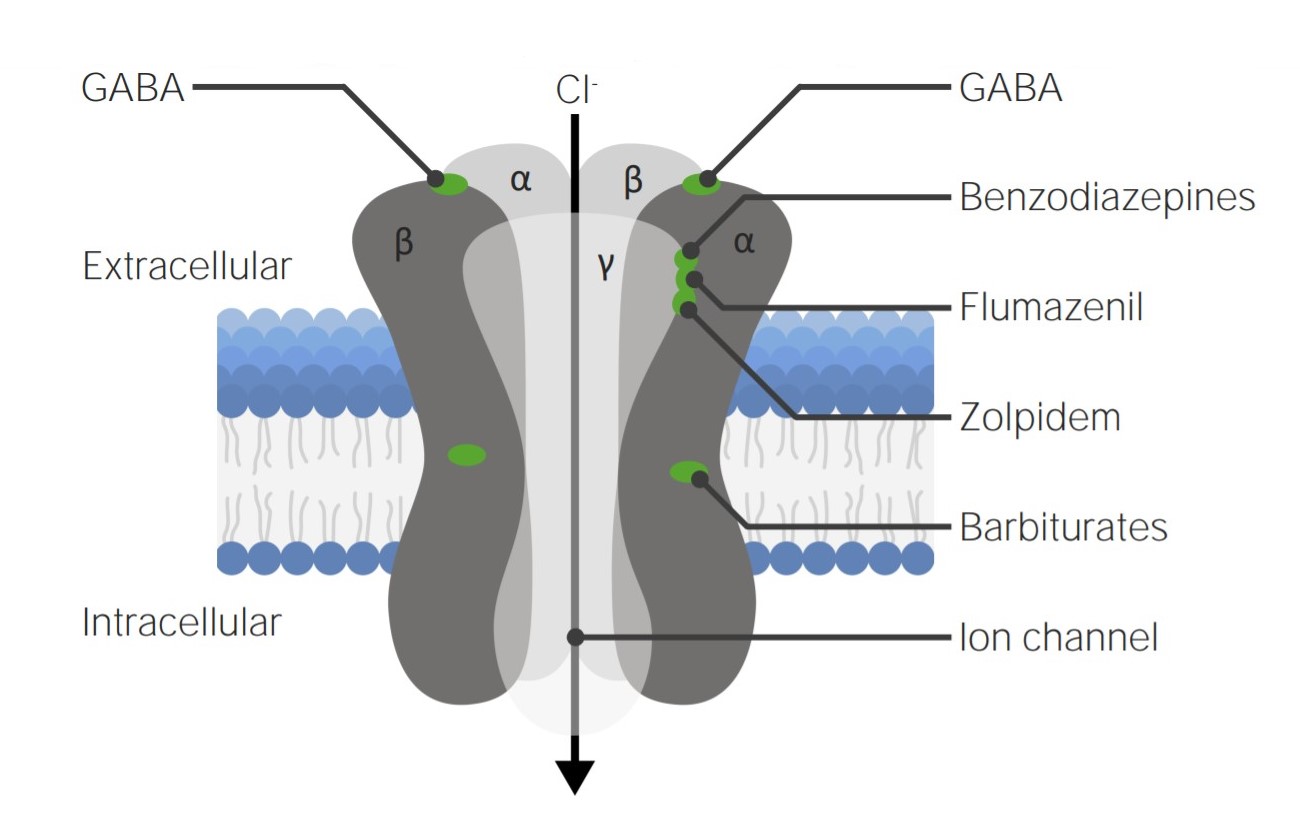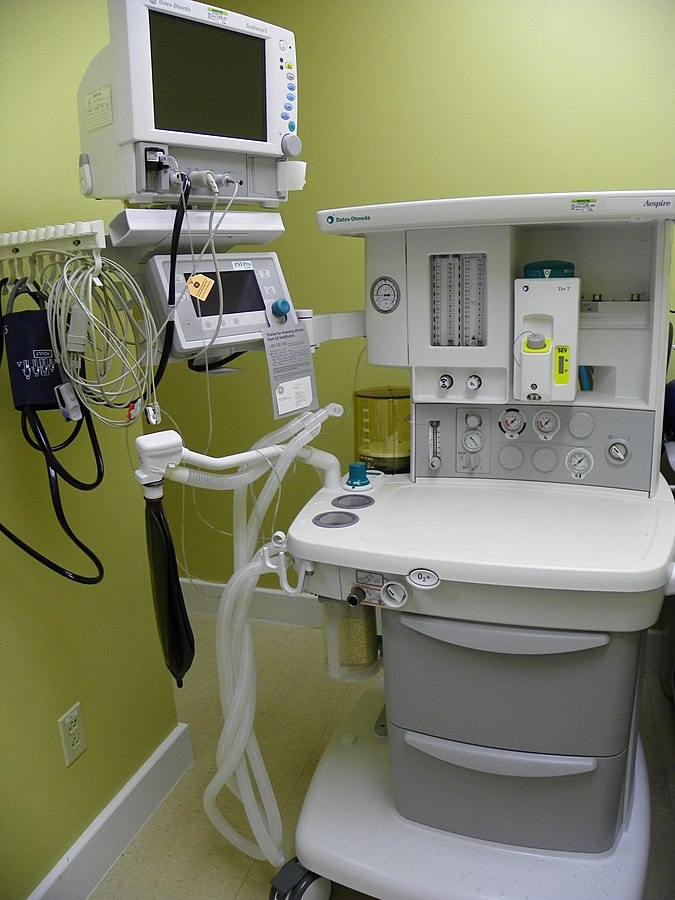Playlist
Show Playlist
Hide Playlist
Reversal Agents – Gases and Induction Drugs
-
04 - Gases and Induction Drugs.pdf
-
Download Lecture Overview
00:00 So the reversal agents that we most commonly use are Neostigmine, Edrophonium, and Pyridostigmine. And all of these drugs are Acetylcholinesterase inhibitors. They prevent the breakdown of Acetylcholine in the neuromuscular space. 00:15 We'll talk about Suggamadex in a moment, which is a newer drug, which forms a new compound with Rocuronium, thus taking Rocuronium out of the system, and rapidly reversing its effect. Acetylcholinesterase inhibitors act upon nicotinic receptors (skeletal muscle) and muscarinic receptors, which produce all the effects from the vagus nerves. So, gut activity, salivation, bronchomotor smooth muscle tone, all those sorts of effects that the vagus produces. And unfortunately, Acetylcholinesterase inhibitors aren't smart enough to only reverse nicotinic receptors, they also reverse muscarinic receptors. 00:57 So that we always add an anti-muscarinic drug along with the reversal agent to prevent some of those side effects. So, those drugs are usually Atropine, which is very rapidly acting, and Glycopyrrolate, which is actually a better match with Neostigmine. And these help avoid excessive airway and salivary secretions, severe bradycardia which can be caused by excessive vagal stimulation, and induction of an asthma attack. So we're going to talk a little bit about Suggamadex now. It's a new agent that works by combining irreversibly with Rocuronium. It has a very rapid onset, and it can be given at any time Rocuronium has been given. So there's no delay in its responsiveness. 01:45 Whereas with the Acetylcholinesterase inhibitors, you usually have to wait with Rocuronium about 20 minutes before they have any effect. With Suggamadex, you can give it right after you give the Rocuronium, and it'll rapidly reverse the effect of the Rocuronium. 02:00 Unfortunately, its cost may limit its use by anesthesiologists. 02:05 And this is the chemical structure of Suggamadex, and think of it more as a doughnut, with an outer ring that is polarized, and a central hole in the doughnut, which is very lipophilic, so it sucks lipids in. And this is kind of what it looks like. On the far right is an imaginary representation of Rocuronium. The middle slide is the Suggamadex. See the hole in the middle is the lipophilic portion. 02:40 And the slide to the far right is the combination of Suggamadex and Rocuronium, where the lipophilic entity of Rocuronium, which is a steroid nucleus, is sucked into the Suggamadex core, and the outer rim of the Suggamadex has been modified, so that it is polar, and has arms that are opposite and equal to the polar arms on the Rocuronium. So the total effect is just to lock this Rocuronium into an irreversible combination. 03:16 So it's an irreversible combination as I mentioned. Very rapid onset, around a minute, whereas Neostigmine as I mentioned, the peak effect of Neostigmine even in somebody who can be reversed, is around 8 minutes, and it lasts as long, it takes as long as 18 minutes to actually reverse the effect of Rocuronium. Suggamadex has no effect on muscarinic receptors, it appears to have a very clean side effect profile. It'll reverse even very large doses of Rocuronium in about 75 seconds or less. 03:50 So let's just review this presentation. We talked about vapours. 03:55 We talked about induction drugs. We talked about gases and nitrous oxide. 04:00 We talked about muscle relaxants and reversal agents. And we ultimately talked about Suggamadex and its effect on relaxation of Rocuronium, but only Rocuronium. 04:12 As you can see from this presentation, there are many drugs in anesthesiology and they are complex. And they often interact in ways that are unexpected and can cause, you know, side effects that are unpleasant and have to be dealt with and anticipated. So, one of the duties of an anesthesiologist is to use these drugs in a safe fashion, with full knowledge of how they work, in those cases where we really know how they work, and what to expect in terms of side effects, and to do the best in his or her ability to reduce those side effects.
About the Lecture
The lecture Reversal Agents – Gases and Induction Drugs by Brian Warriner, MD, FRCPC is from the course Anesthesiology: Introduction.
Included Quiz Questions
Which of the following features do acetylcholinesterase inhibitors have?
- The need for simultaneous administration of an M-blocking agent
- The propensity to cause tachycardia
- The tendency to act mainly on nicotinic receptors
- Decreasing acetylcholine concentration in the neuromuscular junction
How does sugammadex differ from acetylcholinesterase inhibitors?
- By directly affecting the muscle relaxant drug
- By acting only on muscarinic receptors
- By exhibiting minimal effects with large doses of muscle relaxants
- By a slow onset of action
- By being cost-effective
Which of the following statements about sugammadex is TRUE?
- Its mechanism of action is irreversible.
- It prevents the breakdown of acetylcholine.
- It has a linear chemical structure.
- At least 5 minutes is required for the onset of its action.
- It has a strong effect on muscarinic receptors.
Customer reviews
5,0 of 5 stars
| 5 Stars |
|
5 |
| 4 Stars |
|
0 |
| 3 Stars |
|
0 |
| 2 Stars |
|
0 |
| 1 Star |
|
0 |





